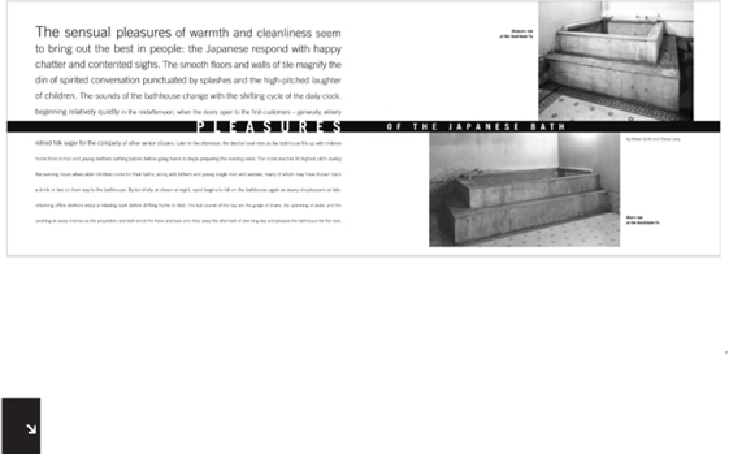Graphics Reference
In-Depth Information
A BLACK LINE
dividing the spread contrasts with the loose texture of the type; the white type in
the line creates spatial tension as one word breaks out of the line and another appears to recede
into it. The two photographs have very different edge relationships to the format.
Cheng Design
United States
Compositional Contrast
Creating areas of differing presence or quality—areas that
contrast with each other—is inherent in designing a well-resolved, dynamic composi-
tion. While the term “contrast” applies to specific relationships (light versus dark, curve
versus angle, and dynamic versus static), it also applies to the quality of difference in
relationships among forms and spaces interacting within a format together. The conflu-
ence of varied states of contrast is sometimes referred to as “tension.” A composition
with strong contrast between round and sharp, angular forms in one area, opposed by
another area where all the forms are similarly angular, could exhibit a tension in angu-
larity; a composition that contrasts areas of dense, active line rhythms with areas that are
generally more open and regular might be characterized as creating tension in rhythm.
The term tension can be substituted for contrast when describing individual forms or
areas that focus on particular kinds of contrast—for example, in a situation in which the
corner of an angular plane comes into close contact with a format edge at one location,
but is relatively free of the edge in another; the first location could exhibit more tension
than that of the second location.



